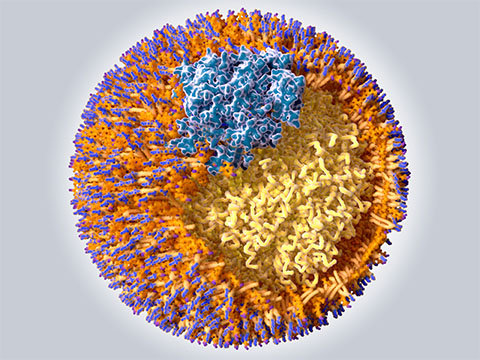How do diet and lipoprotein levels affect heart health
Cardiovascular diseases are among the leading causes of death globally, taking an estimated 17.9 million lives each year. An important risk factor of heart disease is an unhealthy diet leading to overweight and obesity, high blood pressure and increased levels of glucose and lipids in blood. Drugs that help manage body weight have clinical value but do not help prevent premature deaths. Hence, scientists seek ways to identify and treat individuals at higher risk of heart disease.

Increased levels of triglycerides and small low-density lipoproteins, or LDL, and low level of high-density lipoproteins, or HDL are markers of atherogenic dyslipidemia, a metabolic condition that builds plaques in the arteries, leading to heart diseases. Previously, cross-sectional studies have shown a correlation between high triglyceride levels and soluble LDL receptor, or sLDLR.
Ronald Krauss and his group at the University of California, San Francisco in collaboration with Christopher Gardner’s team in Stanford University recently showed dynamic changes in lipids and lipoproteins in conjunction with sLDLR; the study was published in the Journal of Lipid Research.
Krauss is interested in understanding the mechanisms regulating plasma lipoprotein metabolism that may impact cardiovascular disease risk and discovering sLDLR as an important component that impacts it. The Krauss lab uses ion mobility analysis to subdivide fractions of various densities of lipoproteins into narrow intervals of their respective subclasses. His team used this technique to study the correlation between lipoprotein particles and cardiometabolic risk, a lipid measure of heart disease risk.
Gardner provided samples from Diet Intervention Examining the Factors Interacting with Treatment Success, or DIETFITS, a study in which people were given either a healthy low-fat or low-carbohydrate diet to determine how lipid and lipoprotein fractions influence cardiometabolic risk. The researchers investigated the cross-sectional and longitudinal relationship of lipids, lipoproteins related to the level of sLDLR and triglyceride with a baseline of six months.
According to Krauss, using principal component analysis, his team showed that the level of sLDLR is tightly regulated to these other lipid measurements. The study population was limited, so this study must be replicated to make generalizations about the conclusions.
It has already been shown that he protease, membrane type 1–matrix metalloproteinase, or MT1-MMP, cleaves the ligand binding domain of sLDLR capable of binding to very low-density lipoprotein, or VLDL, and LDL particle and increases the level of sLDLR in plasma.
“The work is clinically and scientifically important for developing new therapeutic approaches to either target the protease and/or other mechanisms to inhibit the cleaving of LDLR,” Krauss said. “As the free domain of LDLR circulating in plasma acquires new function by binding to VLDL, mechanisms to directly stop the association of LDLR with VLDL could also be potential measurement to lower the atherogenic dyslipidemia.”
Krauss said the study opens new avenues to explore “how the soluble LDLR achieves this new feature by unknown conformational changes.”
“MT1-MMP is thought to be activated by unknown inflammatory signaling pathways,” he said, “which also needs further investigation along with its mode of interaction with sLDLR.”
Enjoy reading ASBMB Today?
Become a member to receive the print edition four times a year and the digital edition monthly.
Learn moreGet the latest from ASBMB Today
Enter your email address, and we’ll send you a weekly email with recent articles, interviews and more.
Latest in Science
Science highlights or most popular articles

Exploring the link between lipids and longevity
Meng Wang will present her work on metabolism and aging at the ASBMB Annual Meeting, March 7-10, just outside of Washington, D.C.

Defining a ‘crucial gatekeeper’ of lipid metabolism
George Carman receives the Herbert Tabor Research Award at the ASBMB Annual Meeting, March 7–10, just outside of Washington, D.C.

The science of staying strong
Muscles power every movement, but they also tell the story of aging itself. Scientists are uncovering how strength fades, why some species resist it and what lifestyle and molecular clues could help preserve muscle health for life.

Bacteriophage protein could make queso fresco safer
Researchers characterized the structure and function of PlyP100, a bacteriophage protein that shows promise as a food-safe antimicrobial for preventing Listeria monocytogenes growth in fresh cheeses.

Building the blueprint to block HIV
Wesley Sundquist will present his work on the HIV capsid and revolutionary drug, Lenacapavir, at the ASBMB Annual Meeting, March 7–10, in Maryland.

Gut microbes hijack cancer pathway in high-fat diets
Researchers at the Feinstein Institutes for Medical Research found that a high-fat diet increases ammonia-producing bacteria in the gut microbiome of mice, which in turn disrupts TGF-β signaling and promotes colorectal cancer.

